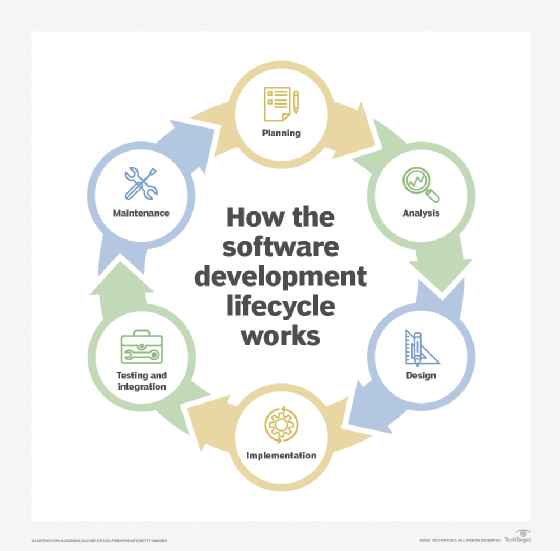requirements analysis (requirements engineering)
What is requirements analysis (requirements engineering)?
Requirements analysis (requirements engineering) is the process of determining user expectations for a new or modified product. It is usually a team effort and demands a variety of human soft skills, such as critical thinking, communication and judgment.
Requirements analysis is a common and essential concept in software development and software project management. At the start of every software project, the project team must understand, finalize and document the features and functionalities required of the end product. These required features and functionalities are often called functional specifications, and the process of determining and understanding them is called requirements gathering and analysis.
Requirements must be quantifiable, as detailed as possible and relevant to the end product. In addition, they should be clearly documented so the development team has clear expectations and understands required specifications from the beginning.
Requirements analysis in software engineering does the following:
- Clarifies the required features and overall vision of a new product.
- Clarifies stakeholder expectations for that product.
- Prevents conflict and communication gaps during development and testing.
- Ensures that the final product conforms to requirements, i.e., prevents scope creep.

The importance of communication during requirements analysis
During requirements analysis, project team members come together to understand the project goals, clarify expectations and document the product's required specifications and features. All of this requires clear and unambiguous communication between team members.
When gathering requirements, the project team should also communicate with other stakeholders, such as the project owner and end users, to determine their expectations regarding specific features. Early and frequent discussions between these parties help to prevent ambiguity. It ensures that the final product conforms to the end user's or client's needs and avoids forcing users to adjust their expectations.
Requirements analysis and feature creep
Requirements analysis and clear communication help to prevent feature creep in software projects. Also known as scope creep, feature creep refers to the addition of excessive features to a product, which often makes it overly complex and difficult to use.
Feature creep is usually the result of poor planning, insufficient communication, inadequate requirements analysis and poor understanding of requirements by the team. It complicates product design, undermines its value and can eventually make it unusable for end users. To avoid such problems, project teams must gather, understand and analyze the product's requirements before development begins.
Requirements analysis process
Requirements analysis is a multistage process that involves the following steps.
1. Understand the key stakeholders and end users
In any project, the key stakeholders, including end users, generally have final say on the project scope. Project teams should identify them early and involve them in the requirements gathering process from the beginning.
2. Understand the project goal
To capture all necessary requirements, project teams must first understand the project's objective. What business need drives the project? What problem is the product meant to solve? By understanding the desired end, the project team can define the problem statement and have more productive discussions when gathering requirements.
3. Capture requirements
At this stage, all relevant stakeholders provide requirements. This can be done through one-on-one interviews, focus groups or consideration of use cases. Project teams gather stakeholder feedback and incorporate it into requirements.
4. Categorize requirements
Categorization of requirements can help with prioritization, impact analysis, feasibility analysis and conflict resolution. Four common requirements categories are the following:
- Functional requirements.
- Technical requirements.
- Transitional requirements.
- Operational requirements.
5. Interpret and document requirements
Post-categorization, the project team should analyze its set of requirements to determine which ones are feasible. Interpretation and analysis are easier when requirements are well defined and clearly worded. Each requirement should have a clear and understood impact on the end product and the project plan. After all the requirements have been identified, prioritized and analyzed, project teams should document them in the software requirements specification (SRS).
6. Finalize SRS and get sign-off on requirements
The SRS should be shared with key stakeholders for sign-off to ensure that they agree with the requirements. This helps prevent conflicts or disagreements later. Feedback, if any, should be incorporated. The SRS can then be finalized and made available to the entire development team. This document provides the foundation for the project's scope and guides other steps during the software development lifecycle (SDLC), including development and testing.

Context diagram and prototypes in requirements engineering
A context diagram is a visual model that shows the various interfaces and boundaries of the end product with the external world. In other words, the diagram shows how the external world and product elements should interact with and impact one another.
A prototype can help teams to convert intangible requirements into a tangible form. By developing a prototype and showing it to end users -- or, more practically, a selection of end users -- the team can gather user feedback and understand what requirements it lacks. Then, it can incorporate feedback to improve the prototype and use it to create an end product that appropriately reflects user requirements and expectations.
Popular tools used in requirements engineering
Modern development teams can choose from a number of tools to help them analyze and finalize requirements. These include the following:
- Business Process Model and Notation (BPMN). BPMN enables project teams to create a standardized graphical representation of processes and coordinate communications between participants in that process.
- Flowcharts. Whether simple or complex, flowcharts can show the relationships between activities in an intuitive way, which can provide clarity of understanding and simplify communication as the project progresses.
- Gantt charts. Gantt charts help with project planning and -- to some extent -- with requirements analysis. A Gannt chart visually represents various tasks and scheduled timelines, complete with start and end dates.
- Gap analysis. Gap analysis helps project managers and teams to evaluate a product's performance and compare it against its requirements.






